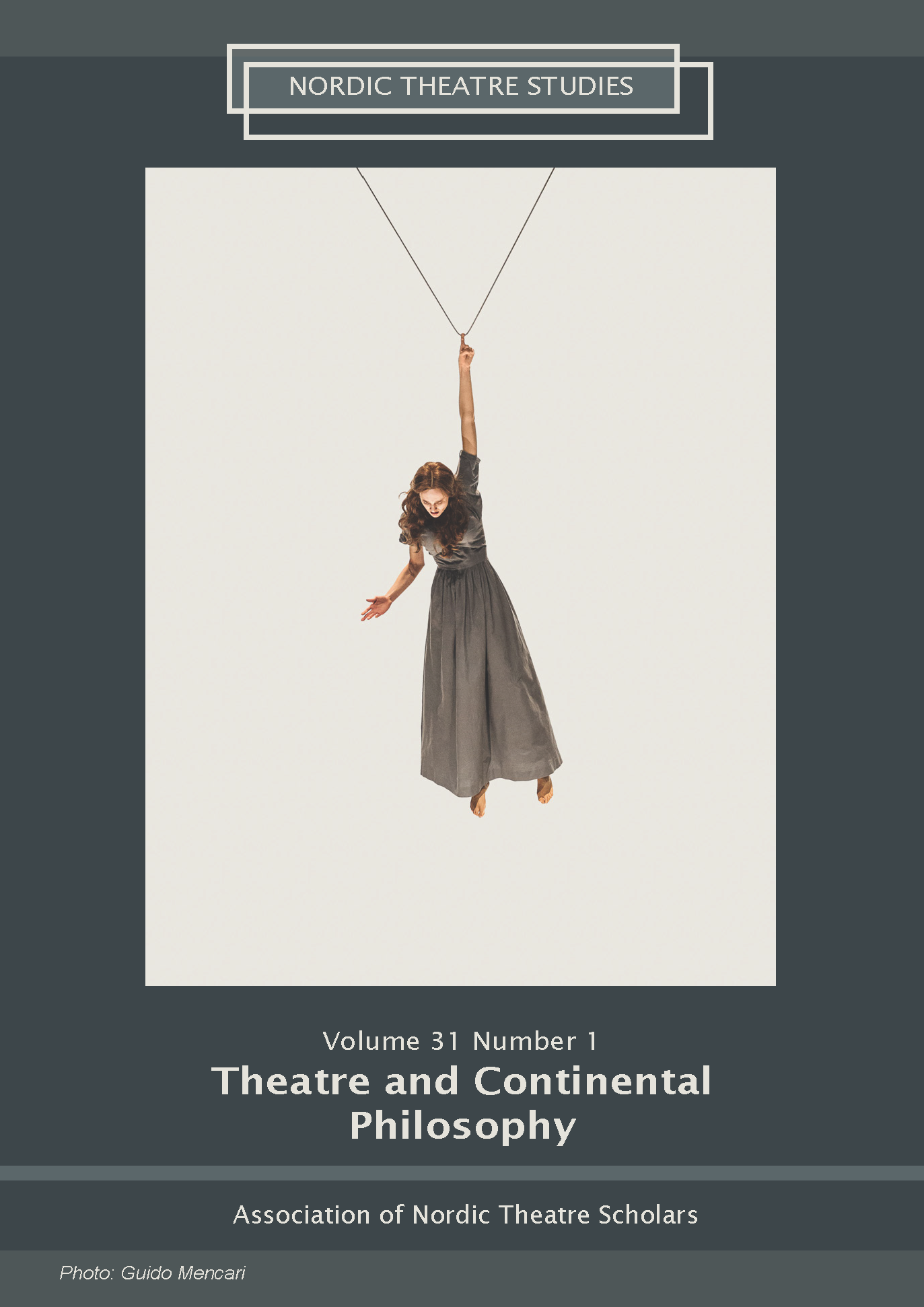Hybrids, Chimeras, Aberrant Nuptials:
New Modes of Cohabitation in Bioart
DOI:
https://doi.org/10.7146/nts.v31i1.113000Keywords:
Bioart, symbiosis, sympoiesis, hybrid, chimera, bio-performativityAbstract
The essay examines different cases of bioart, which, by combining biological materials and technological processes, present new forms of biological assemblages. For example, such collectives as Tissue Culture and Art Project and Art Orienté Objet, artists Eduardo Kac, ORLAN, Maja Smrekar and Robertina Šebjanič invent new forms of hybridization and symbiotic forms of cohabitation. The essay will question what is so specific in bioart and in what respect does it differ from scientific research conducted in laboratories, or from
some biological phenomena found in the natural world. My hypothesis is that bioart introduces a specific mode of bio-performativity and creates a unique moment of bio-presence: it does not represent but presents and produces new material bodies, which are living and decaying in our presence. The essay will seek to discuss the specific time in which these Semi-Living objects perform their existence: this time, which is “the time of the now”, can be called (in Giorgio Agamben’s terms) kairos and contrasted with our habitual chronological time.
Kairos is a messianic time, a contraction of time (similar to time in specific laboratory conditions), which helps to imagine new ways of organizing living materials. In this sense, bio-presence and bio-performativity can be seen as a resistance to the habitual arrangement of space and time and its biopolitical implications
References
Braidotti, Rosi. 2013. The Posthuman. Cambridge: Polity Press.
Catts, Oron and Ionat Zurr. 2016. “The Biopolitics of Life Removed from Context: Neolifism”. In: S. E. Wilmer and Audronė Žukauskaitė (eds.). Resisting Biopolitics: Philosophical, Political,
and Performative Strategies. New York, London: Routledge, 135–55.
Deleuze, Gilles, Guattari, Felix. 2004. A Thousand Plateaus: Capitalism and Schizophrenia. Trans. Brian Massumi. New York, London: Continuum.
Despret, Vinciane. 2016. What Would Animals Say If We Asked the Right Question? Trans. Brett Buchanan. Minneapolis, London: University of Minnesota Pr ess.
Gilbert, Scott F. 2017. “Holobiont by Birth: Multilineage Individuals as the Concretion of Cooperative Processes”. In: Anna Tsing, Heather Swanson, Elaine Gan, Nils Bubandt (eds.). Arts of Living on a Damaged Planet. Minneapolis, London: University of Minnesota Press, 73–89.
Gilbert, Scott F., Jan Sapp, and Alfred. I. Tauber. 2012. “A Symbiotic View of Life: We Have Never Been Individuals,” The Quarterly Review of Biology, 87(4): 325–41.
Haraway, Donna. J. 1997. Modest_Witness@Second_Millenium.FemanleMan_Meets_OncoMouse: Feminism and Technoscience. London, New York: Routledge.
Haraway, Donna. J. 2016. Staying with the Trouble: Making Kin in the Chthulucene. Durham, London: Duke University Press.
Haraway, Donna. J. 2017. “Symbiogenesis, Sympoiesis, and Art Science Activism for Staying with the Trouble”. In: Anna Tsing, Heather Swanson, Elaine Gan, Nils Bubandt (eds.). Arts of Living on a Damaged Planet. Minneapolis, London: University of Minnesota Press, 25–50.
Downloads
Published
How to Cite
Issue
Section
License
The copyright belongs to the authors and Nordic Theatre Studies. Users can use, reuse and build upon the material published in the journal but only for non-commercial purposes. Users are allowed to link to the files, download the files, distribute the files on a local network (preferably by links), upload the files to local repositories if their institutions require them to do so, but not republish the files without proper agreements with the journal and the author.

